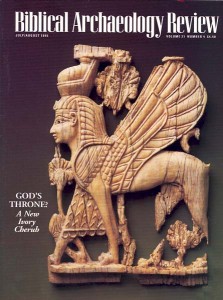New Carbon-14 Results Leave Room for Debate
Sidebar to: Did a Letter to BAR End a Cornell Graduate Student’s Career?
A second batch of carbon-14 tests recently completed on the Dead Sea Scrolls is unlikely to settle any of the many outstanding disagreements concerning the interpretation of the scrolls, or even their dates.
Although in general the new carbon-14 tests are, in the words of the report on the tests, “in reasonable agreement with palaeographic estimates” of the age of the scrolls, there are enough deviations and uncertainties to provide argument for all sides.
Carbon-14 tests give only a range of dates, sometimes quite wide. Even more important, the range itself must be qualified: Test conclusions state only that in 68 percent (one sigma) of the cases the date will be within a particular range; if the range is increased (from one sigma to two sigmas) the percentage can be increased from 68 percent to 95 percent. Expressed somewhat differently, the probability is 68 percent (or 95 percent) that the date falls within a particular range.
To explain this more concretely, let’s look at a particular example. Take the text known as 4Q521, the Messianic Apocalypse. This 14-line fragment speaks of a single messiah who will rule heaven and earth; it describes the resurrection of the dead in the time of the messiah and contains some verbal parallels with the Gospels of Matthew and Luke.c In the words of the authors of the report on the most recent carbon-14 tests,d “This text is the focus of much debate in research, in particular with regard to its possible connection with early Christianity.”
Already a library member? Log in here.
Institution user? Log in with your IP address.

